The question of “what to do if bitten by rattlesnake” is really common among climbers and hikers. The majority of those who goes on hiking trip really have no clue about what they can do if bitten by snakes.
But we are glad to give you all the information you would want to know! Much of the time, hikers don’t usually get the chance to be very close with snakes. It is a typical conviction that snakes are actually more anxious than people.
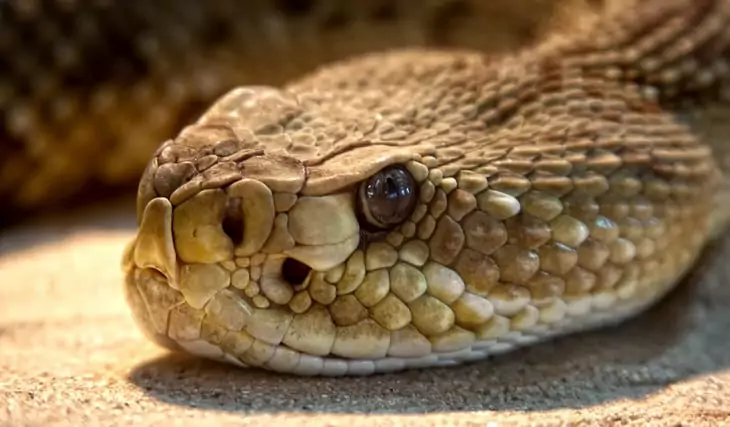
However, the fact is that snakes don’t actually escape when they see people, they can be both defensive and aggressive when threatened in their domain. Read on to know what rattlesnakes are, and what to do if bitten by one.
The Nature Of Rattlesnakes
Rattlesnakes fall among the category of the most lethal venomous snakes abiding in the US. They are responsible for the greater part of the snake bites in North America because of their impulse to hold fast and caution threat (whether animal or person) to step back by rattling their tails.
The time limit it takes for a man to die if by any means bitten by a rattlesnake, relies on his body size, time and weight between bite and cure. The majority of people make a full recuperation from snake bites. Most individuals bitten by rattlesnakes have accidentally matched with them; so be cautious!
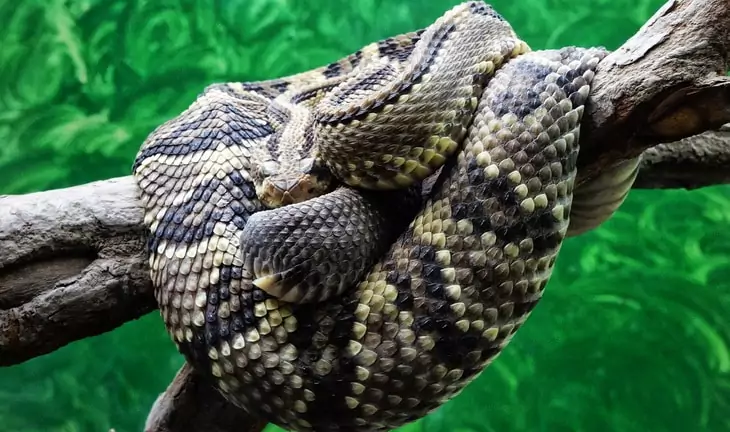
Rattlesnake bites can be harmful, but are not often fatal to people. With appropriate therapeutic treatment, including antidote, bites are always not severe. Most rattlesnake bites have hemotoxic components which destroy tissue and influence the circulatory system by crushing platelets, skin tissues and creating inner discharging.
Rattlesnake venom likewise contains neurotoxic elements which immobilize the sensory system, influencing the victim’s breathing, in some cases ceasing it. The majority of rattlesnakes, have venom made basically out of hemotoxic properties. Mojave rattler and baby rattlesnakes are the exceptions; they possess venom which has more neurotoxic properties compared to hemotoxic and which makes them more perilous.
The coral snake, sea snake and cobra group of snakes likewise have venom with predominant neurotoxic attributes. Latest statistics have shown that more rattler bite victims are demonstrating side effects of neurotoxic venom compared to earlier years. This prompts the question “Is rattler venom ending up noticeably more neurotoxic?” Research is being carried on to know the reason why more neurotoxic system exists in casualties.
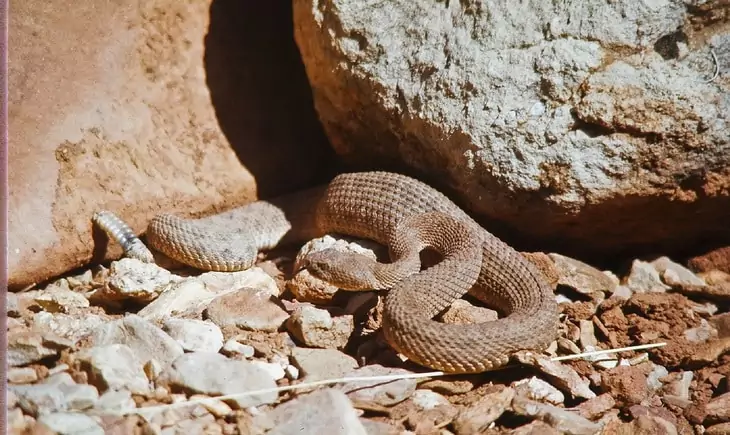
Their venom is very intense. The venom of the majority of rattlesnake species is made principally of hemotoxins. Some rattler venom contains neurotoxins. Speckled, Mojave, tiger rattlesnakes are cases of rattlers where either the whole species or certain populaces inside the species create neurotoxins. Neurotoxins act speedier than hemotoxins and affect the nervous system.
Prevention of Rattlesnake Bite
One great approach to prevent rattlesnake bite is to abstain from trekking regions that are known to be snake region, particularly during the evening. You have to remember that snakes are really dynamic in darkness. So it is likewise a smart thought to choose walking along open trails and to keep away from loose rocks and bushes.
Many rattlesnake bites can be prevented because most of them are not aggressive toward people unless they sense peril. Thus, evasion of snakes ordinarily prevents a bite, so individuals should not attempt to deal with, catch or undermine any snake. Statistical reviews propose that around 40% of all rattlesnake bites in the US happen mostly in people that are addicted to alcohol drinks.

If someone’s work environment involves regions known to be natural surroundings of snakes, wearing defensive boots, thick jeans, and wearing gloves may decrease the chances of rattlesnake bites; or if nothing else, it might diminish the bite injury and the measure of venom dispersed. We have elaborated some prevention measures you can use to prevent rattlesnake bites, so read on!
Wear long jeans and boots
You need to wear long jeans and boot when hiking so as to help block rattler venom. Never go shoeless or put on slippers when walking in territories where you can’t plainly observe where you are setting your feet.
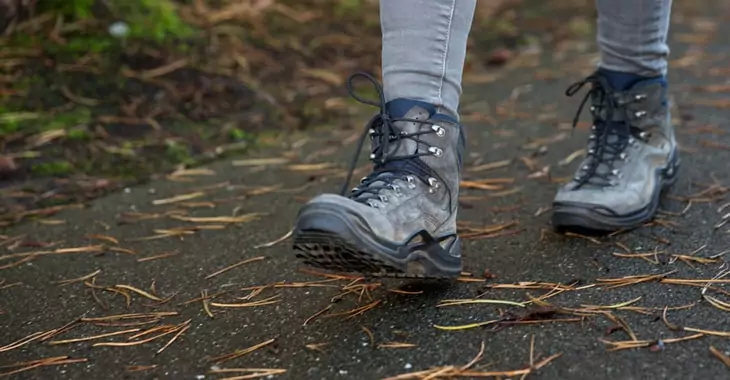
Wearing climbing boots and long jeans offer an additional layer of protection from exigencies with a rattler.
Stay on trails
You need to always remain on trails when climbing, far from tall weeds and underbrush. Snakes can rest in any place that is not easily seen and enables them to avoid predators, keep away from extraordinary temperatures and hunt down prey.

Since trails have a tendency of having less concealing spots for snakes, they give a level of insurance for you. The brush gives security for snakes. Remain on trails to maintain a strategic distance from potentially disturbing a rattler in its hiding place.
Touch not even if it seems dead
Don’t ever try to disturb or touch a snake, even if it seems dead. Snakes utilize their concealed position to strike and murder their prey unsuspecting.

Try not to botch their evident stillness as a safe chance to explore. Indeed, even freshly murdered snakes may still have the strength to bite.
Look for hidden snake before picking up stones or rocks
Since rattlers are usually very much disguised and sit tight discreetly for prey, they can be hard to see. Heaps of logs or rocks, patches of thick bushes, and spreads of tall grasses are only a few of the spots where snakes may look for the safe house.

Carefully examine rocks or logs before lifting them up or taking a seat to avoid inadvertently disturbing a rattler.
Never hike alone
Never hike alone, especially in remote regions. Always have somebody with you who can help you out in times of crises. Having a hiking accomplice is vital to help in an emergency, particularly in a circumstance where you or your accomplice is bitten by a rattler.

If possible, have your climbing accomplice to take the photograph of the rattlesnake for easy identification in order to help with treatment.
Instruct kids about snakes
Always instruct kids to regard snakes and to allow them to remain unbothered. Inquisitive kids who touch or disturb snakes are much of the time bitten. To read more tips, see our article on hiking safety to manage risks in the wilds.
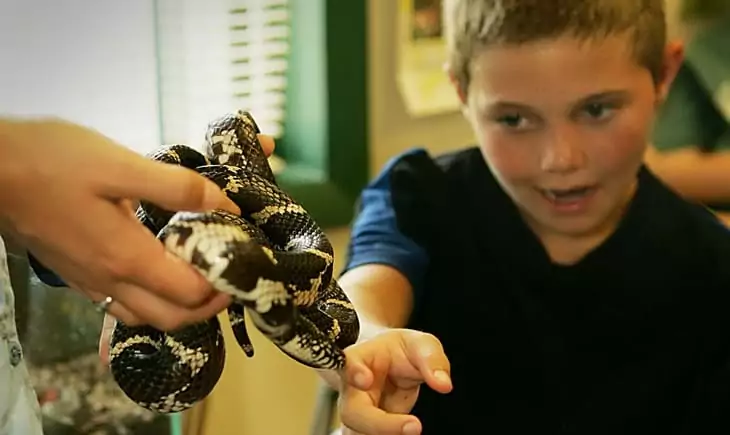
Instruct them often to give snakes the privilege of the way so as to avert snake bites.
Symptoms of Rattlesnake Bites
The symptoms of rattlesnake bites depend on the kind of toxin(s) discharged into the puncture wound or bite, and to some extent, on the level of toxin available in the tissue. The sorts of symptoms created can be classified into four categories:
- Cardiotoxins:This kind of toxin act on heart tissue
- Cytotoxins: This kind of toxin act on tissue at snakebite site or on tissue that specifically retains the toxin
- Neurotoxins: This kind of toxin act on sensory system tissue
- Hemotoxins: This kind of toxin act on the blood coagulation framework and may cause internal bleeding.
A few toxins may bring about more than one of these symptoms.
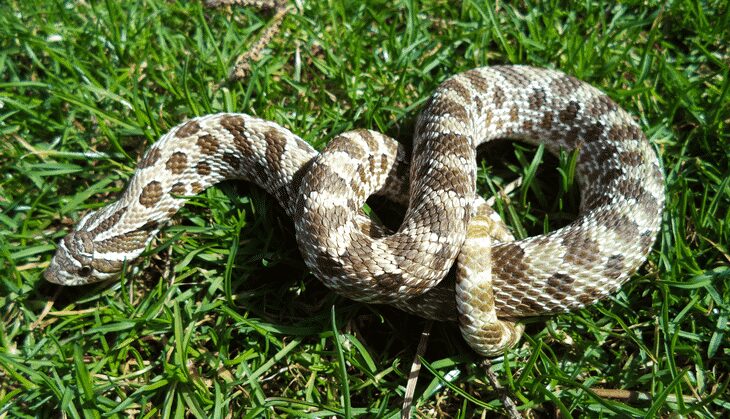
On account of the numerous symptoms that can happen with venomous rattlesnake bites, the potential symptoms and signs to search for are listed below:
- A pair of cut imprints at the injury
- Swelling and redness around the bite
- Intense pain at the snakebite site
- Vomiting and Nausea
- Labored breathing (in outrageous cases, breathing may cease)
- Disturbed vision
- Increased sweating and salivation
- Shivering or numbness around the face as well as appendages
Symptoms from these snake toxins are fairly variable and may happen rapidly or they might be deferred for a considerable length of time, contingent upon the type of toxin and the sum retained. However, little kids are more helpless against snake bites due to the fact that the relative bigger measure of toxin retained in connection with their smaller body size, can make the effect of the toxin more intense.
Identifying the snake helps emergency medical professionals to both envision the potential side effects, and it takes into consideration more quick and suitable treatment of the venomous rattlesnake bite. A definite depiction of the snake, a photo of the snake, or even the corpse of the snake, will help distinguish the kind of snake and the kind of toxin.
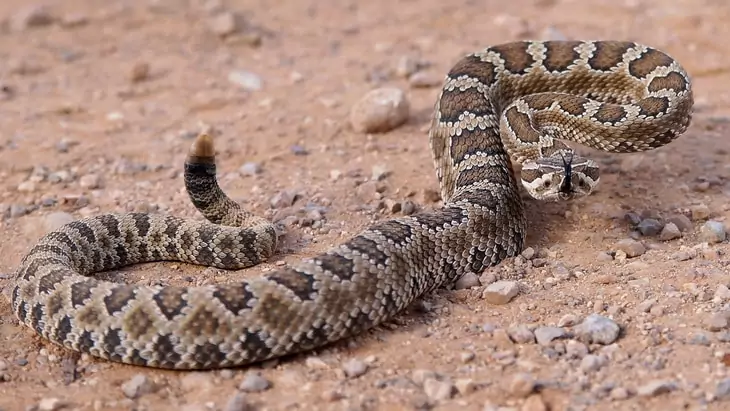
Much time shouldn’t be squandered, however, in moving the patient to a proper health care center and don’t place others at risk of getting bitten by rattlesnakes.
First Aid Treatment of Snakebite
It is very important to know the right step to be taken when you or your accomplice has been bitten by a rattlesnake, and also to know what can be done to avoid a snakebite. Common sense and logic are the two primary things that should be incorporated in understanding how to treat rattlesnake bite. So read on to know what to do and the steps to be taken.
- Step 1. Diagnose the snake bite: To start with, you should know how to diagnose rattlesnake bite. It is significant to know whether it is really a snakebite or not. If you witnessed what happened, then you can be certain about it and after that move to the next guideline. But if you did not witness what happened, you should search for indications of the two teeth bite mark. Some other snakebite signs include swelling and direct to extreme torment in the bite region. You should likewise search for skin staining, which will show venom and the jerking skin on the region. The victim could likewise experience the ill effects of various symptoms such as spewing, queasiness, discombobulation, slurred discourse, sweating and variation from the norm of mental condition. On the off chance that the symptoms and signs are available, then it can be concluded that it is actually a snake bite and you need to continue.
- Step 2. Get help immediately: This is the next and a very vital step to take after successfully diagnosing the snake bite. You need to get help immediately either by calling people around or dialing the contact of the closest health center around to bring an ambulance.
- Step 3. The victim should be kept very still and calm: The next step is to make the victim stay very still and calm. It will even be much better if you can immobilize the victim. Make sure you don’t allow the move and it is ideal to utilize a splint in the snakebite area. Likewise, ensure that the bitten body part is situated lower than the chest of the victim. Put a tightening band or a gauze around 2-4 inches over the snakebite area, and likewise under it, if conceivable. Ensure that the swathe is not very firmly inserted through. The main purpose of the bandage is to keep the venom from heading out to the circulatory system and the lymphatic system.
- Step 4. Identify the snake: It would likewise be better if you can identify the snake. Observe the snake’s size, pattern, color and some other subtle details of the snake.
- Step 5. Clean the snakebite or wound: This Is another stage in treating snakebite. You need to Clean the injury or snake bite region with water and soap.
- Step 6. Take the victim to the closest health center or clinic: The next step is to take the victim to the closest clinic with immediate effect. The victim needs to be checked persistently to keep an eye out for some other symptoms and signs. If necessary, you may need to do CPR.
- Step 7. Try not to panic! This is really a golden rule. Try as much as possible to make the victim and every other individual in the team not to panic. And lastly, keep on checking the victim for changes in the snakebite or injured area.
Make sure to read our piece on medical essentials for your first aid kits to help you more.

What you should not do
We have already taken you through what to do in treating snake bite, but there are also some things you should avoid when treating snake bites.
We are going to take you through them one after the other.
- Avoid strenuous physical activity: Don’t allow the victim to take part in strenuous physical activity. If possible, lift and carry the victim to safety. You can likewise have them climb out gradually, without their backpack so they are not over-burdened.
- Don’t use a tourniquet: Restricting shallow blood stream keeps the venom from circulating, which you need to prevent. Concentrated venom will quickly annihilate cells. Enabling it to spread will weaken the toxin and diminish tissue harm.
- Don’t use a cool pack: Cold decreases healthy flow to the tainted area. Likewise, a few specialists believe that snake venom expands weakness to frostbite.
- Don’t use a suction device: Eliminating the venom by using a suction device was once standard method, yet is never again considered to be a safe treatment. The suction device does not evacuate a substantial measure of poison and can harm delicate tissue.
- The victim must not eat or drink anything: Make sure you don’t let the snake bitten victim to drink or consume anything, including drug and liquor unless affirmed by medical experts.
- Don’t cut over the snakebite marks and try oral suction: This is because of snake curve fangs, the pocket of venom won’t be the place expected and will likely have effectively spread. Also, majority of snake bites are viewed as “dry,” in the situation where no toxin was discharged into the snake bite victim. This may likewise enhance the danger of infection in the range by having an open injury.
See our article on important safety measures when camping to help you do the right thing during an emergency.
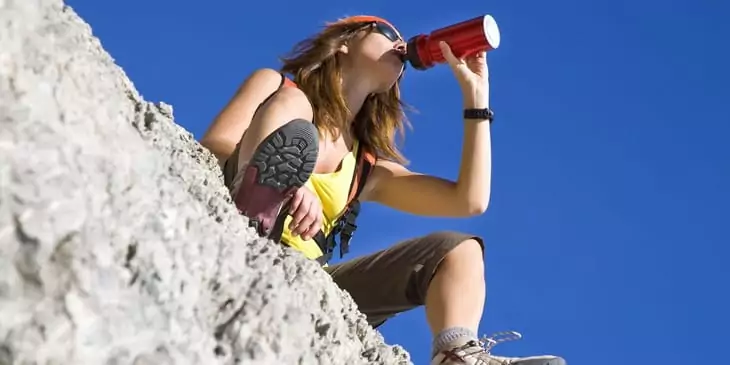
Medical Treatment of Rattlesnake Bite
Mostly, the venom is not really transferred in a snakebite, also there is likewise a major possibility that the snake isn’t a noxious kind. It is likewise imperative to know that regardless of the possibility that the snake is not noxious, medical treatment in hospitals is still important because the injury would still require some treatment and tetanus immunization are also required to be administered to the victim (contingent upon the number periods you had the tetanus vaccine). Many are astounded to discover that you can be infected with tetanus from a rattlesnake bite.
An antivenom is needed if the snake species has been diagnosed to be venomous and the venom had been infused. It is critical to remember however that not all medical centers may have promptly available antivenom. Getting first aid treatment can actually save the snakebite victim, particularly if it is needed to buy some time between the period when the snake bites the victim and the time the victim gets to the hospital.

There are some species of rattlers within Canada and the United State, envenomation by which all will be secured by this convention. Those rattlesnakes, which are indigenous to Central America, Mexico and South America, whose extents don’t cover into the US, will be shrouded in isolated conventions. Fatalities in current circumstances are rare. The venom can create a wide range of clinical symptoms, including local tissue pulverization, cardiovascular fall, coagulopathy, and with a few neuromuscular symptoms and neurotoxic.
A tightening band should be set up proximal to the snakebite area. If available, leave in place, but if not, use a Penrose deplete as though for venipuncture. This prevents venom absorption. Try not to take it away until the patient has gotten to the medical center and is already getting the antivenom.
Ensure that no less than 20 ampules of Crotalidae Polyvalent Antivenom (CPA) are on the ground. This neutralizer has the important portions to kill the venoms of every single United State and Canadian poisonous snakes.
Concluding Thoughts
We believe you have really gotten a lot of helpful information from this article. It is actually astounding to realize that numerous rattler bites are not deadly and will take hours for the symptoms and signs of poisoning to create. In the US, more people die from honey bee and wasp stings than snake bites.
A poisonous snake should always be considered perilous. Non-deadly bites are severe enough to bring about pain and long haul tissue harm. A rattler has pits that are utilized for identifying heat.
These pits enable the rattler to trace warm-blooded prey (either human or animal) from a six-feet distance. In spite of the fact that being bitten by a rattlesnake is kind of rare, but if you do go on a hiking trip, it would be ideal to know some precautionary measures against snake bites.
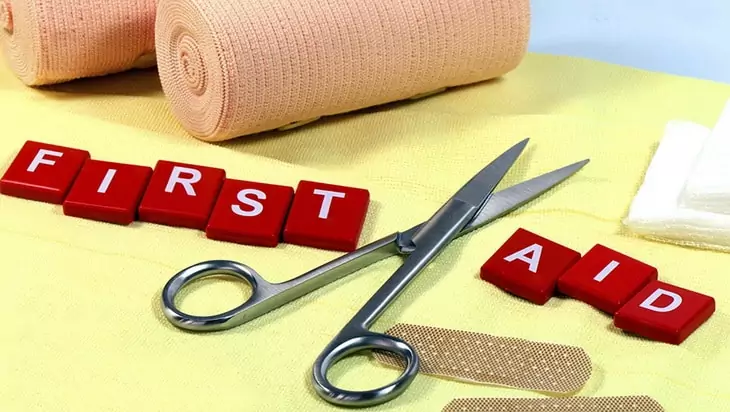
Also, if the venomous snakebite eventually happens, keep in mind that the first aid treatment is vital. A dead rattlesnake can still harm someone and it is important to deal with a dead rattlesnake with care. It can even convey venom that can still bring about severe damages due to the possible reflex action of the snake after dying. For more tips and guidelines snakebite first aid, see our article on this important topic.
Have you ever experienced a snake bite or seen someone that has been bitten by a snake? If yes, we do love to hear from you! You can share us your experience by leaving a comment below.








Good suggestion, Max. First and foremost you aren’t supposed to panic before engaging the other steps. You should never hike alone in order to stand a better chance of surviving a rattlesnake bite.
In addition to the tips that I have provided, you should remember to be extra careful in those deep woods. Having a hiking partner is always helpful.